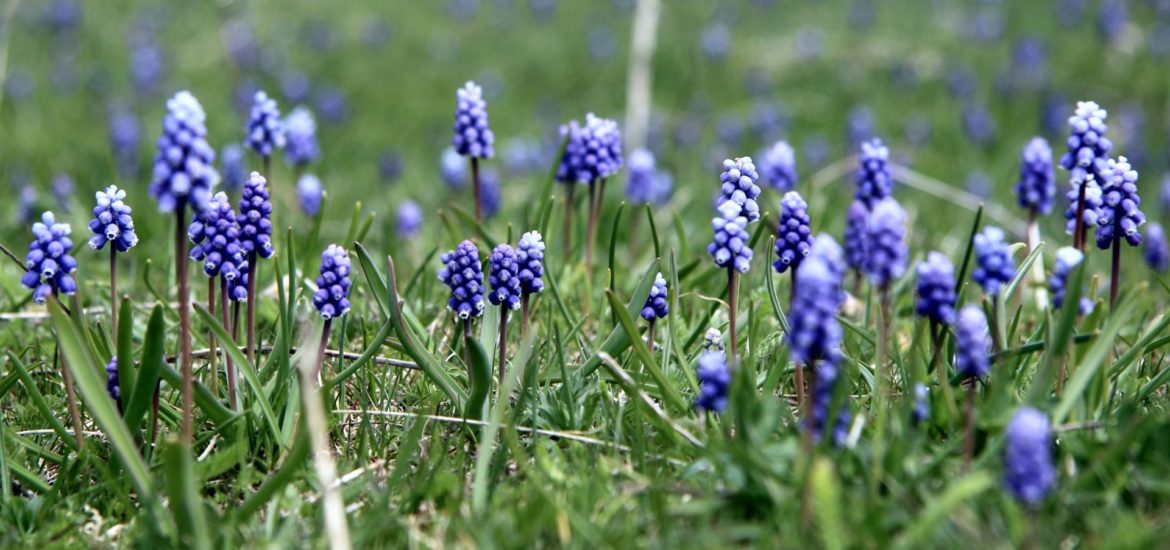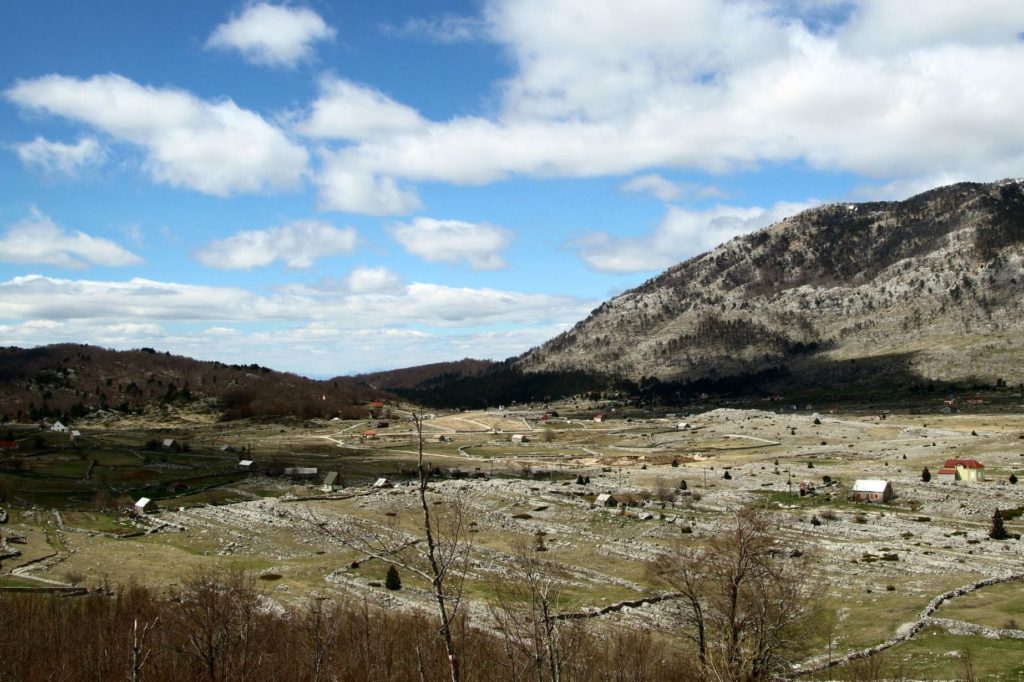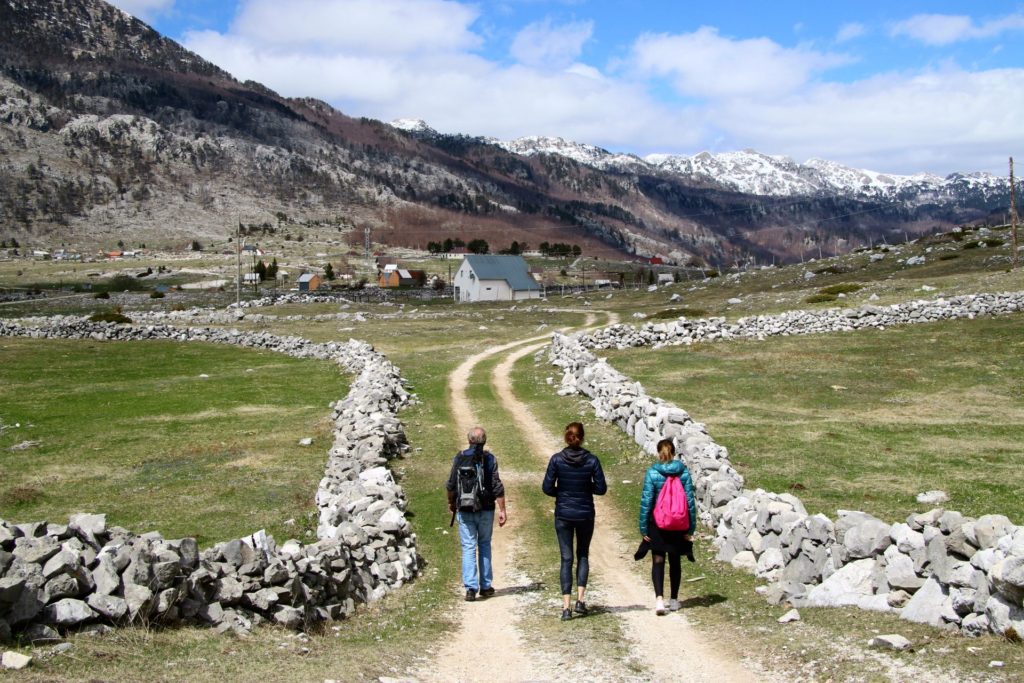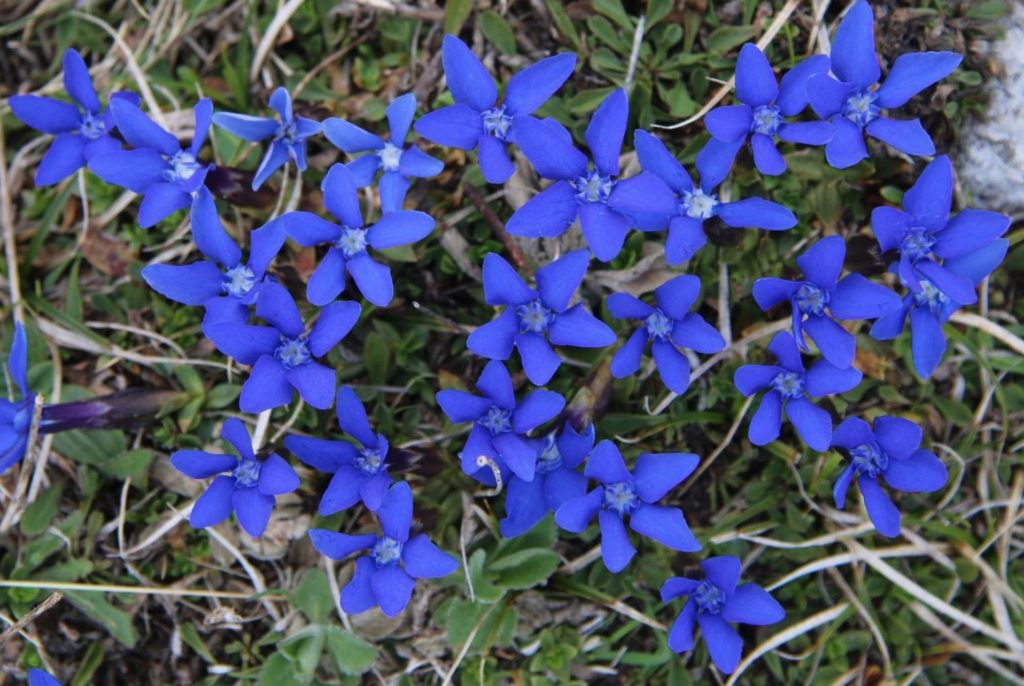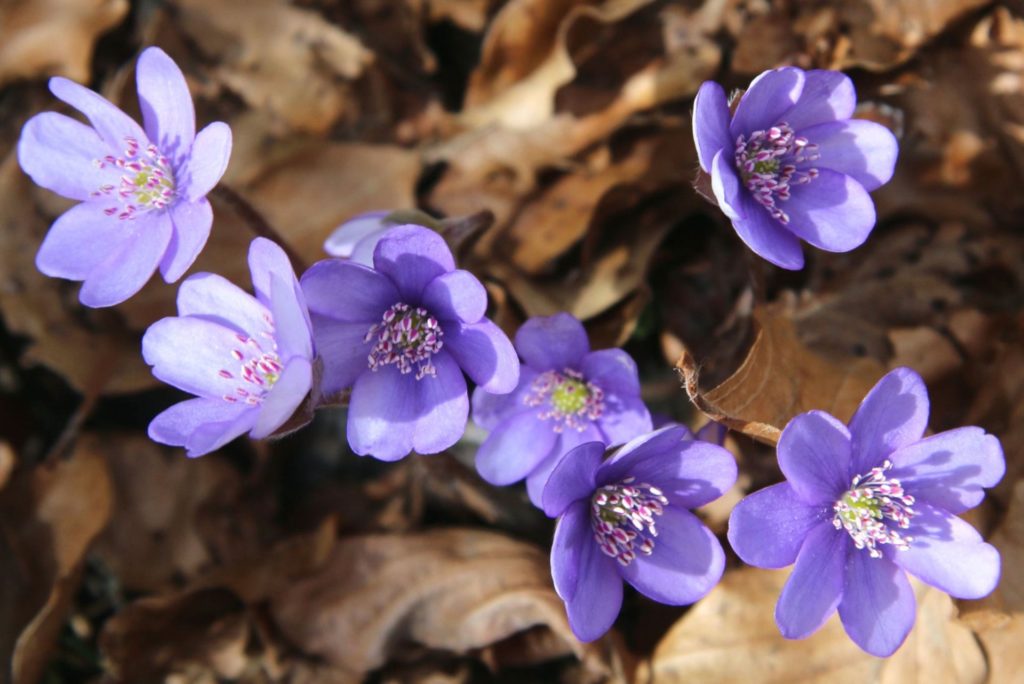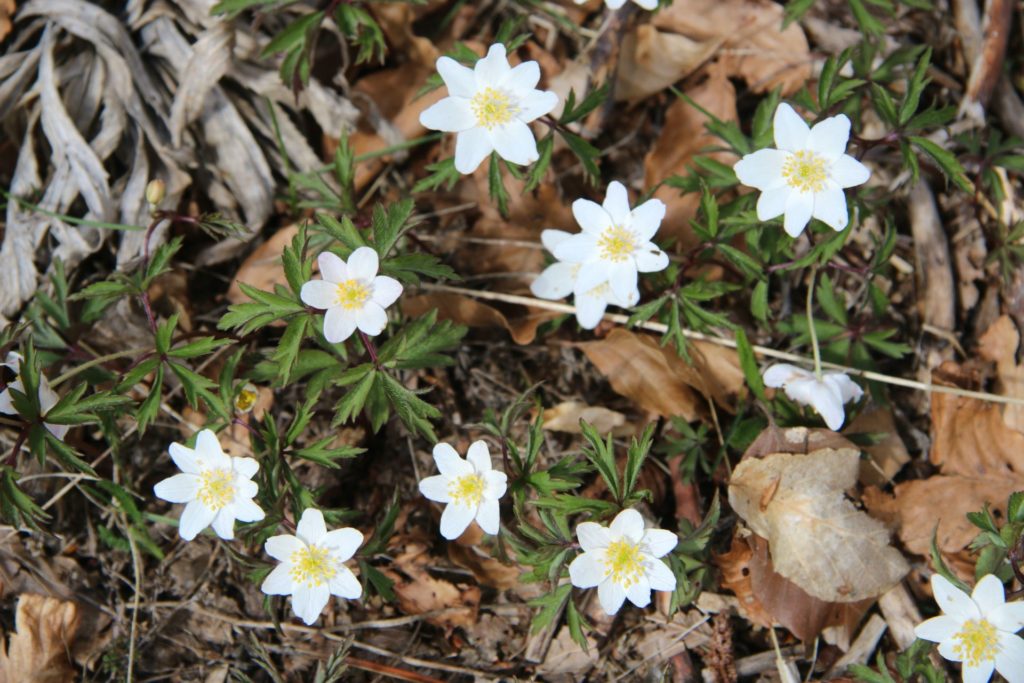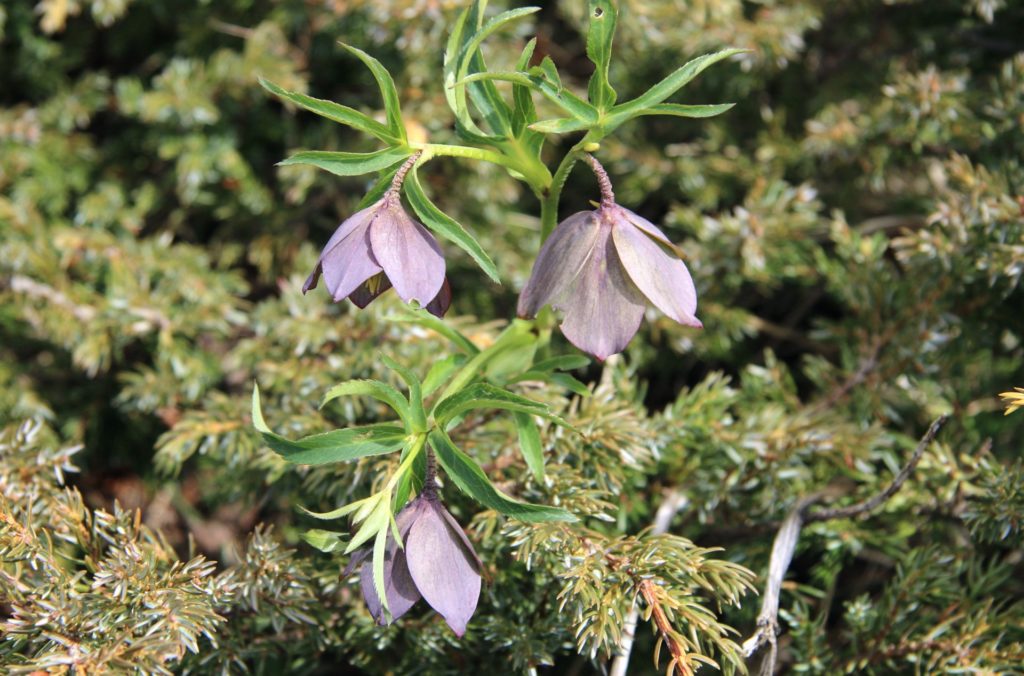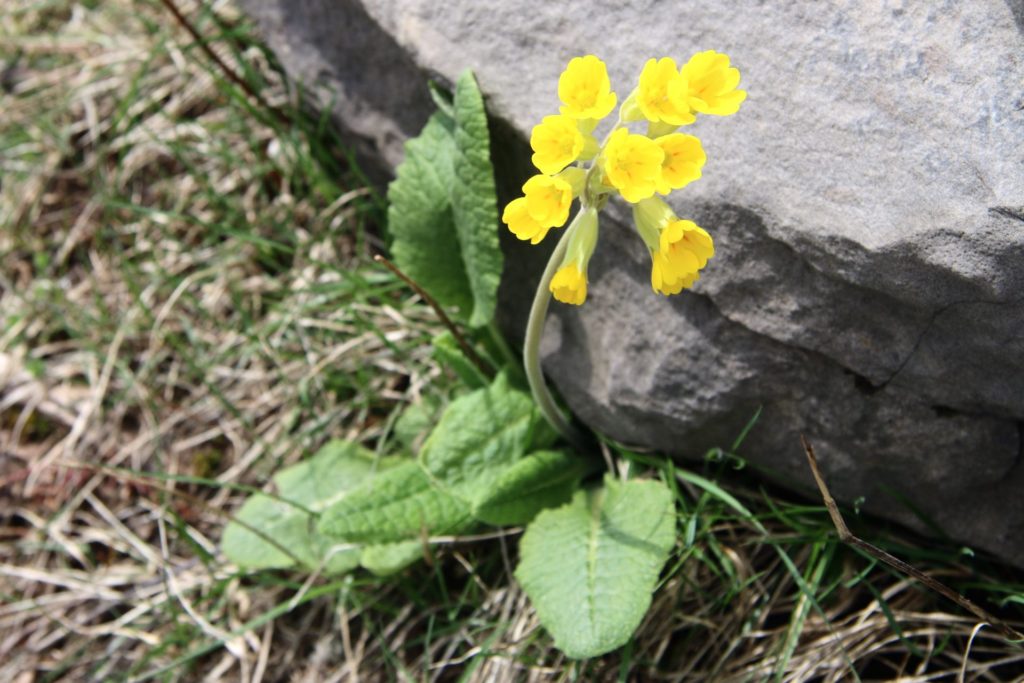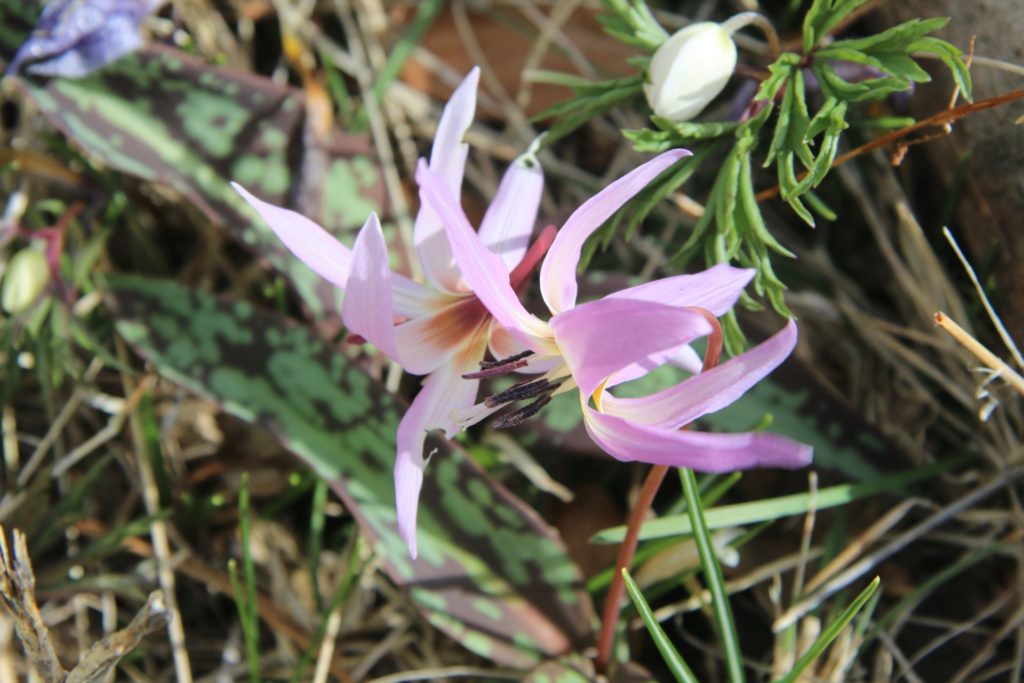It’s April, and numerous almond trees decorate the hills of Kučka Krajina with their white-pink flowers. Bladder-senna shrubs show their bright yellow flowers along the roads and the meadows have got a gentle green color. But on the plateau of Kučka Korita, at an altitude of more than 1350 m above sea level, nature is just awakening. Many beech trees are still naked and patches of snow show the last traces of winter, but the woodlands and karst areas, high above the Cijevna canyon, are already full of windflowers, primroses and violets.
Kučka Korita is one of my favorite places in Montenegro. It is wonderful in autumn, but in spring it is a real paradise for outdoor fans, mountain lovers, photographers and botanists.
The well-marked hiking tour to Grlo Sokolovo (“Falcon’s Throat”), from where the view of the snow-covered Albanian Alps is spectacular, is an easy family walk (see: KUČKA KORITA: THE PATROL PATH TO GRLO SOKOLOVO
Like always, it was a surprise for us to see the contrast between Podgorica and the karst plateau of Kučka Korita. It was not only the difference in temperature (which was around 9°C lower here), but also the appearance of nature that struck us. Isn’t it fantastic to discover a completely different world, just 35 km from Podgorica?
It is hard to imagine the vast fields of grape hyacinths (Muscari botryoides – photo 1) with their bright blue color, and it is almost impossible to show this beauty on photos. Wild grape hyacinths are originally from central and south-eastern Europe, where they grow in open woodlands and pastures, but in Western Europe they are also cultivated as a garden plant.
One of the most beautiful flowers I discovered on the pastures was the spring gentian (Gentiana verna). These flowers with their deep blue color grow up to an altitude of 2,600 m and can be found, among others, in the Balkans, Turkey and Morocco. In northern Europe they are very rare and in several European countries they are protected as an endangered species.
If you are superstitious, never pick a gentian! Old sayings suggest that death would follow if the flower would be picked, and it is also considered bad luck to bring the gentian into a house, as the individual would risk being struck by lightning!
The windflower or wood anemone (Anemona nemorosa) covers parts of the woodlands as a white carpet, but it can also be pink, lilac or deep purple. The flower closes up in wet and cloudy weather and hides away during the night.
Strange superstitions are linked to this flower, which is also called the Flower of Death in China. Some areas in Europe associated the flower with misfortune. It is unclear whether the bad luck arose from fear of disturbing fairies or from the fact that the plant is poisonous and cattle have died from ingesting it.
There are around 20 species of hellebores (Helleborus), most of which can be found in the Balkans. The scientific name Helleborus derives from the Greek name helléboros, from elein “to injure” and borá “food”. Many species are poisonous. Despite names such as “winter rose” and “Lenten rose”, hellebores are not closely related to the rose family.
You can find many species of primroses al over Europe, but the woodlands of Kučka Korita are full of cowslip primroses (Primula veris), a plant that is native through most of temperate Europe. Why is it called cowslip? It’s because the word cowslip may derive from the old English for cow dung, probably because the plant was often found growing amongst the manure in cow pastures.
And finally there is a flower I like most of all: the dog’s-tooth-violet (Erythronium dens-canis). Its white bulb is oblong and resembles a dog’s tooth, hence this common name. This flower is found in the woodlands and is protected in most countries of Western Europe.
Of course, there are many other flowers in this area: yellow violets, white and purple crocusses, buttercups, etc. So, should you be interested in the wealth of Kučka Korita’s flora, hurry up, take a day off and enjoy the panoramic road “Circuit around Korita” (see: CIRCUIT AROUND KORITA – A NEW TOURIST ATTRACTION) before these beautiful flowers disappear!
